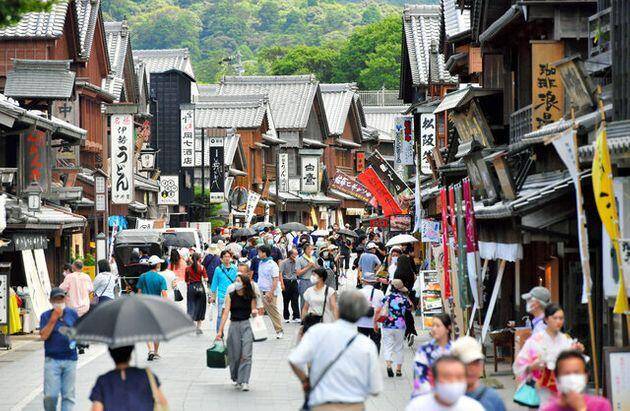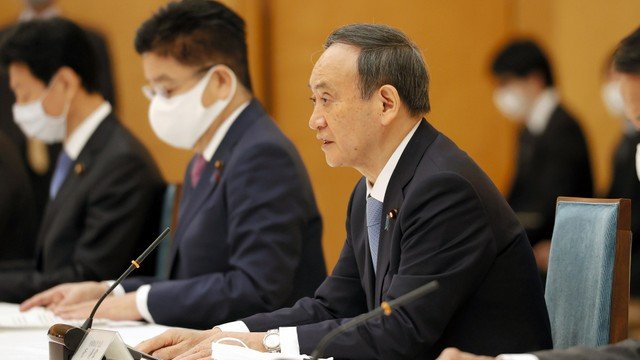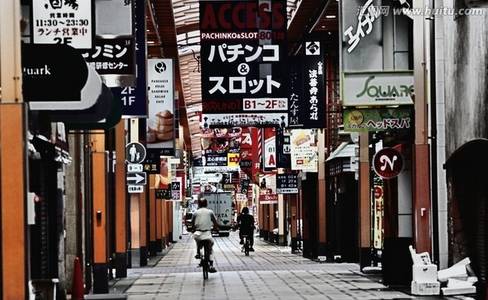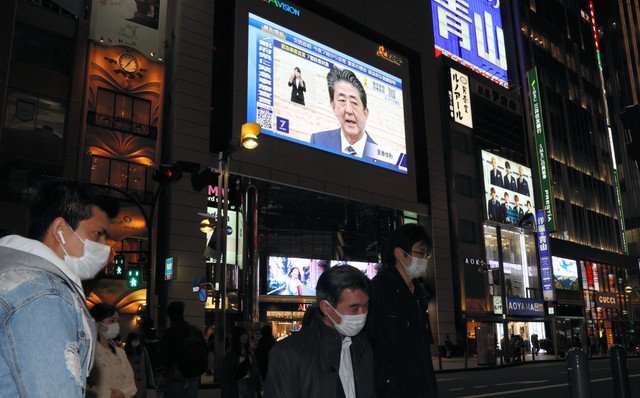On the 8th local time, Japanese Prime Minister Yoshihide Suga announced the launch of the third major economic stimulus plan, with a total scale of US$708 billion. On the same day, the revised data released by the Cabinet Office of Japan showed that the annual growth rate of the Japanese economy in the third quarter of this year reached 22.9%.
After three consecutive quarters of economic downturn, the substantial growth figures seem to indicate that Japan is recovering from the recession caused by Coronavirus pandemic. So why does Suga appear to be so impatient to launch a large economic stimulus plan?
What’s the difference this time with three “spending money”?
In order to alleviate the impact of the epidemic on the economy, Japan has previously passed two rounds of economic stimulus plans, with a total expenditure of 235 trillion yen (2.25 trillion US dollars), accounting for 40% of Japan’s GDP.
Compared with this economic stimulus plan, the first two rounds of plans focused on stimulating domestic demand and stimulating consumption in Japan that was hit by the epidemic. The relief targets were mainly individuals, families, and small and medium-sized enterprises.
The current round of stimulus plans focus on transforming the industrial structure. The budget (18.4 trillion yen), which accounts for about 40% of direct fiscal expenditure, will be invested in green energy, digital technology, distance education, and mobile communications. As for why such a huge change occurred, a poll about Yoshihide Suga revealed clues.
Travel subsidies have limited effects in stimulating consumption and are criticized for accelerating the deterioration of the epidemic
Japan’s latest public opinion poll showed that the approval rate of the cabinet led by Prime Minister Yoshihide Suga fell to 50.3%, a drop of more than 10 percentage points from the 63% approval rate last month. At the same time, Japan’s Coronavirus pandemic continues to worsen, and the number of new confirmed cases in a single day remains high. More than 50% of the interviewees believed that the Japanese government’s “Go To Travel” plan was the cause of the outbreak in Japan.
“Go To Travel” is one of the “Go To Campaign” travel subsidy programs launched by the Japanese government on July 22 this year. Under this plan, the government will subsidize people’s catering, accommodation and shopping expenses when traveling in the country to stimulate personal consumption, revitalize the stagnant tourism industry, and boost the local economy.
As the epidemic in Japan had rebounded at that time, local governments and people continued to question the plan. Despite this, the subsidy program was launched as scheduled and increased the flow of tourists from Japan.
According to the accommodation and travel statistics released by Japan Tourism on September 30, various accommodation facilities in Japan received 26.05 million Japanese tourists in August, an increase of 4.7 million from July; the hotel room occupancy rate increased by 2.5 percentage points compared with July , Reaching 32.1%.

Entering October, Japan is facing a third wave of epidemics, and clusters of cases such as restaurants have surged. According to Japan’s Asahi Shimbun, the Japanese government does not enforce pre-testing of tourists participating in the “Go To Travel” and also includes densely populated Tokyo in the scope of the plan; on the other hand, “Go To Eat” puts infection risk Increase, the President of the Japanese Medical Association Toshio Nakagawa pointed out that the plan was initiated by the government, which made the public relax their due vigilance.

In addition, the data also shows that although the “Go To” plan has increased Japan’s domestic consumption and made Japan’s personal consumption in the third quarter increase by 5.1% from the previous quarter, the outbreak of the epidemic has greatly reduced the effectiveness of the plan. In view of the current worsening of the epidemic, the government may suspend the tourism subsidy program at any time, and the already fragile service industry will become even more unbearable.
In this situation, the Yoshihide Suga government launched an economic stimulus package to prevent the negative impact of the epidemic from further expanding. From stimulating consumption to advancing economic transformation, Japan’s shift in its economic stimulus package also shows the inheritance and transformation of economic policies between Suga Yoshihide and former Prime Minister Shinzo Abe.
“Abenomics” at the end of the war
When Japan’s former Prime Minister Shinzo Abe was in office, he proposed “Abenomics” consisting of “three arrows”, which are loose monetary policy, large-scale fiscal stimulus, and structural reforms, and promoted through a series of measures such as stimulating local economies. The economy is revitalized.
Looking back at Japan when “Abenomics” prevailed, the stock market has got rid of years of weakness, and the trend has gradually recovered, and the deflation that has plagued the Japanese economy for a long time has been somewhat eased. However, data shows that the two rounds of quantitative easing started in March 2013 have injected nearly 300 trillion yen in base currency into the market.
However, as of March 2016, the Bank of Japan’s current account balance totaled 27 billion. The actual effective currency quota is far smaller than the amount of additional currency issued. The currency used to increase liquidity stopped flowing as soon as it left the bank, like turning on the tap to pour water into a bucket. Once the valve was tightened, the water surface quickly stopped fluctuating, and the Japanese economy also stagnated. Behind the Japanese economy that “does not open the floodgates and let go of the water” is a complex and stubborn social problem-a “low desire society”.
“Low Desire” Japan and the Possibility of Reform
The long-term low inflation and even deflation in Japanese society and Japan’s strict hierarchical system have caused Japanese laborers and youth groups to generally reduce their material pursuits, mainly in the form of no longer caring about salary, promotion space and social status.
Along with social problems such as population decline, aging, declining birthrate, and so on, this eventually formed the “low desire society” described by the well-known Japanese management scientist and economic critic Omaeken. These inherent social ills have caused the stagnation of social consumption, which greatly reduces the effectiveness of Abenomics.

In response to the problem of “weak consumption”, Suga Yoshihide inherited the economic means of “Abenomics” to rely on proactive fiscal policies to promote investment and boost consumption, but the target is no longer to stimulate private consumption and investment, and directly affect specific Targeted investment in fields and industries, targeting financial support to new growth areas such as green economy and digital innovation, has also been called “Suga Yoshihide Economics” by the Japanese media.
Although the epidemic has brought huge downward pressure on the Japanese society, it has also exposed a blue ocean in the Japanese economy-digitalization and mobilization. In the “Suga Yoshihide Economics”, the most important point is to promote digital transformation, and finally build Japan into an intelligent society.
Before Yoshihide Suga, the Japanese government invested very little in the use of digital technology to optimize the work of the public sector. After he took office, he established the “Digital Hall” to be responsible for the formulation and development of policies in the fields of digital technology such as IT, artificial intelligence, and the Internet of Things. implement. In this stimulus plan, the Japanese government has also allocated 1 trillion yen to promote the development of the digital economy, which shows its determination.
In the face of a “low desire society”, can Yoshihide Suga’s “arrow” break the game?

With the changes in the external trading environment and the impact of the Coronavirus pandemic, all the growth brought about by “Abenomics” has almost disappeared.
In the face of the stubborn illness of the “low desire society” and the continuous increase in government debt, it is still unknown whether Yoshihide Suga’s “arrow” can break the situation and achieve the 2% inflation target.



